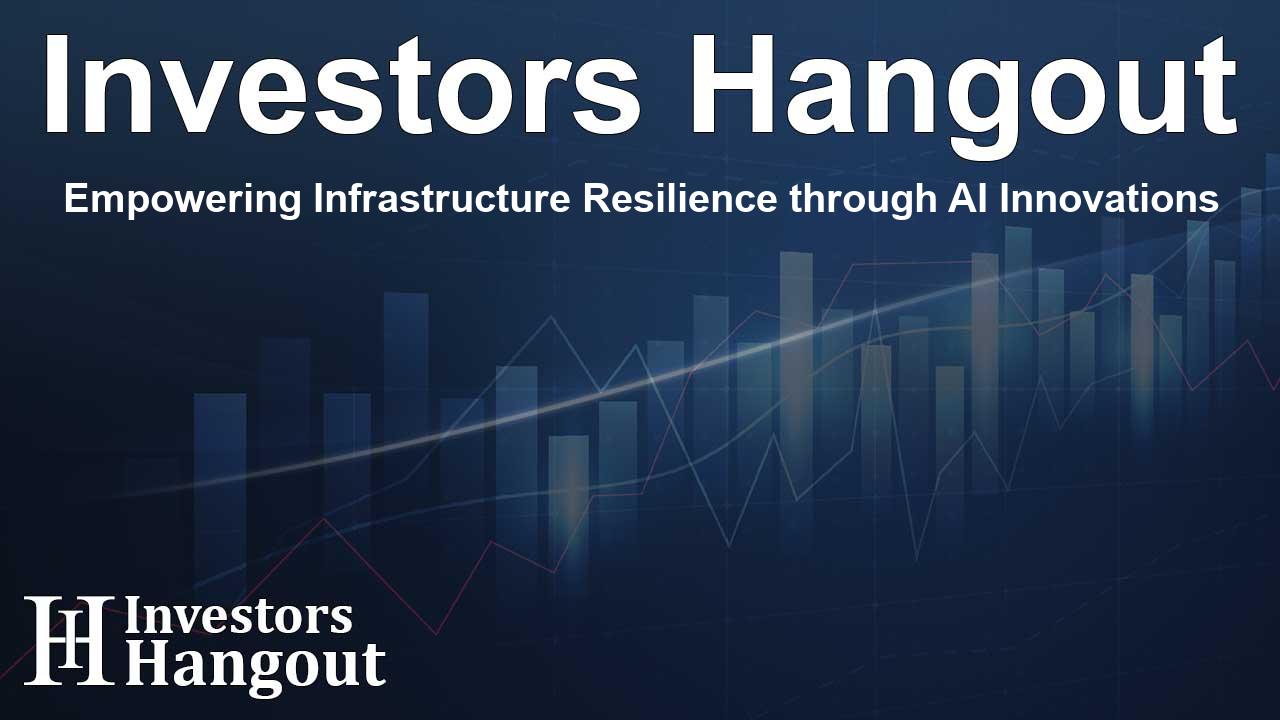Empowering Infrastructure Resilience through AI Innovations

The Role of AI in Reducing Natural Disaster Costs
Artificial Intelligence (AI) is emerging as a transformative technology capable of significantly impacting how we manage infrastructure and respond to natural disasters. Recent analysis has highlighted that leveraging AI can help save approximately US$70 billion annually in avoided natural disaster costs by the year 2050. This potential stems from the ability of AI to enhance infrastructure planning, streamline response efforts, and facilitate effective recovery strategies, offering a strategic pathway for minimizing future costs associated with natural disasters.
Understanding the Financial Impact of Natural Disasters
Natural disasters are a growing concern for infrastructure globally. It is estimated that these events could lead to around US$460 billion in annual losses in infrastructure by 2050. With AI integration, crucial investments can be made to prevent around 15% of these projected losses, equating to substantial annual savings. The ability of AI to assist particularly in managing costs associated with storms and floods positions it as an essential tool for future infrastructure resilience.
Collaborative Approaches to Enhancing Resilience
Effective implementation of AI in managing infrastructure resilience demands cross-sector collaboration. By bringing together expertise from insurers, technology companies, and public sector entities, valuable economic, environmental, and societal benefits can be unlocked. This holistic approach ensures that AI's potential is maximized for infrastructure resilience across various domains.
Investing in Infrastructure Resilience
The necessity for investing in infrastructure resilience grows as natural disasters become more frequent and severe. Aging infrastructure faces significant risks, making it even more crucial to enhance resilience. Existing systems need to expand to mitigate disruption and economic damage while adapting to future impacts, which could bring unpredictable financial consequences. As the average annual losses from disasters rise, it is pivotal that community leaders and stakeholders place a robust emphasis on infrastructure resilience.
The ESIM of AI Across the Infrastructure Lifecycle
Adopting AI technology throughout the infrastructure lifecycle presents numerous advantages. From planning and execution to operational management, AI can provide effective solutions that are proactive in nature. The advantages of using AI are noteworthy, as it is found to potentially save billions in damages caused by storms. Decision-makers should consider AI applications that enable them to manage risks identified at every infrastructure lifecycle stage.
Strategic Planning with AI Technologies
AI allows for advanced planning, enabling leaders to design more resilient infrastructure through methods such as predictive maintenance and digital twin technologies. For instance, optimizing vegetation management can help maintain essential services like energy without succumbing to failure risks from natural disasters.
Enhancing Disaster Preparedness
AI technologies can bolster disaster response strategies with early warning systems that can detect wildfire and flooding threats. Histories around detected risk levels can aid in minimizing losses, emphasizing the importance of timely data collection during such events.
Streamlined Recovery Efforts
After a disaster strikes, AI can assist in rapid assessments of damages. Tools designed for post-disaster inspections can not only expedite recovery but also reduce waste by improving processes like roof repairs to ensure that communities can rebound more effectively.
Overcoming Adoption Challenges
Despite AI’s potential to strengthen infrastructure resilience, barriers to its adoption remain. Collaboration among global stakeholders will be essential in eliminating these hurdles. Governments and industry leaders must work together to establish clear guidelines that promote AI adoption in infrastructure planning and execution.
The Role of Policymakers
Policymakers play a crucial role in setting flexible AI standards that can encourage cross-sector data sharing. Ensuring public sector leaders understand the benefits and limitations of AI will foster a culture of innovation.
Investment from Infrastructure Leaders
Public and private sector infrastructure owners should prioritize investments in modern technologies. Upgrading legacy systems is fundamental for enabling compatibility and improving data accessibility needed for effective AI models.
Financial Sector Commitment
Insurance and finance industries can also drive AI adoption by integrating it into pricing and claims models. This encourages a shared investment in AI solutions within the infrastructure sector.
Technology Innovations for Sustainability
AI providers are urged to focus on innovative, low-carbon solutions that promote resilience, which are essential for creating sustainable and effective AI strategies in infrastructure.
Moving Toward a Resilient Future
As the landscape of natural disasters becomes increasingly complex, it is imperative for various stakeholders to coordinate and develop AI solutions that can complement other resilience strategies. By doing so, projected savings in disaster-related costs could surpass US$115 billion annually by 2050, marking a significant milestone toward achieving a more resilient global infrastructure.
Frequently Asked Questions
What is the potential economic impact of AI on disaster costs?
AI could potentially save about US$70 billion annually in avoided costs due to natural disasters by 2050.
How can AI enhance infrastructure planning?
AI can optimize infrastructure planning through technologies like digital twins and predictive maintenance, allowing for better design and resilience.
What are the benefits of collaboration in AI adoption?
Cross-sector collaboration enhances the ability to unlock economic, environmental, and societal benefits from AI, improving overall infrastructure resilience.
Why is investment in infrastructure resilience important?
With the increase in natural disasters, investing in resilience can protect existing networks and future projects, minimizing disruption and economic loss.
What challenges exist in adopting AI for infrastructure?
Challenges include legacy infrastructure, regulatory gaps, and financial constraints that require cooperative efforts to resolve.
About The Author
Contact Olivia Taylor privately here. Or send an email with ATTN: Olivia Taylor as the subject to contact@investorshangout.com.
About Investors Hangout
Investors Hangout is a leading online stock forum for financial discussion and learning, offering a wide range of free tools and resources. It draws in traders of all levels, who exchange market knowledge, investigate trading tactics, and keep an eye on industry developments in real time. Featuring financial articles, stock message boards, quotes, charts, company profiles, and live news updates. Through cooperative learning and a wealth of informational resources, it helps users from novices creating their first portfolios to experts honing their techniques. Join Investors Hangout today: https://investorshangout.com/
The content of this article is based on factual, publicly available information and does not represent legal, financial, or investment advice. Investors Hangout does not offer financial advice, and the author is not a licensed financial advisor. Consult a qualified advisor before making any financial or investment decisions based on this article. This article should not be considered advice to purchase, sell, or hold any securities or other investments. If any of the material provided here is inaccurate, please contact us for corrections.
